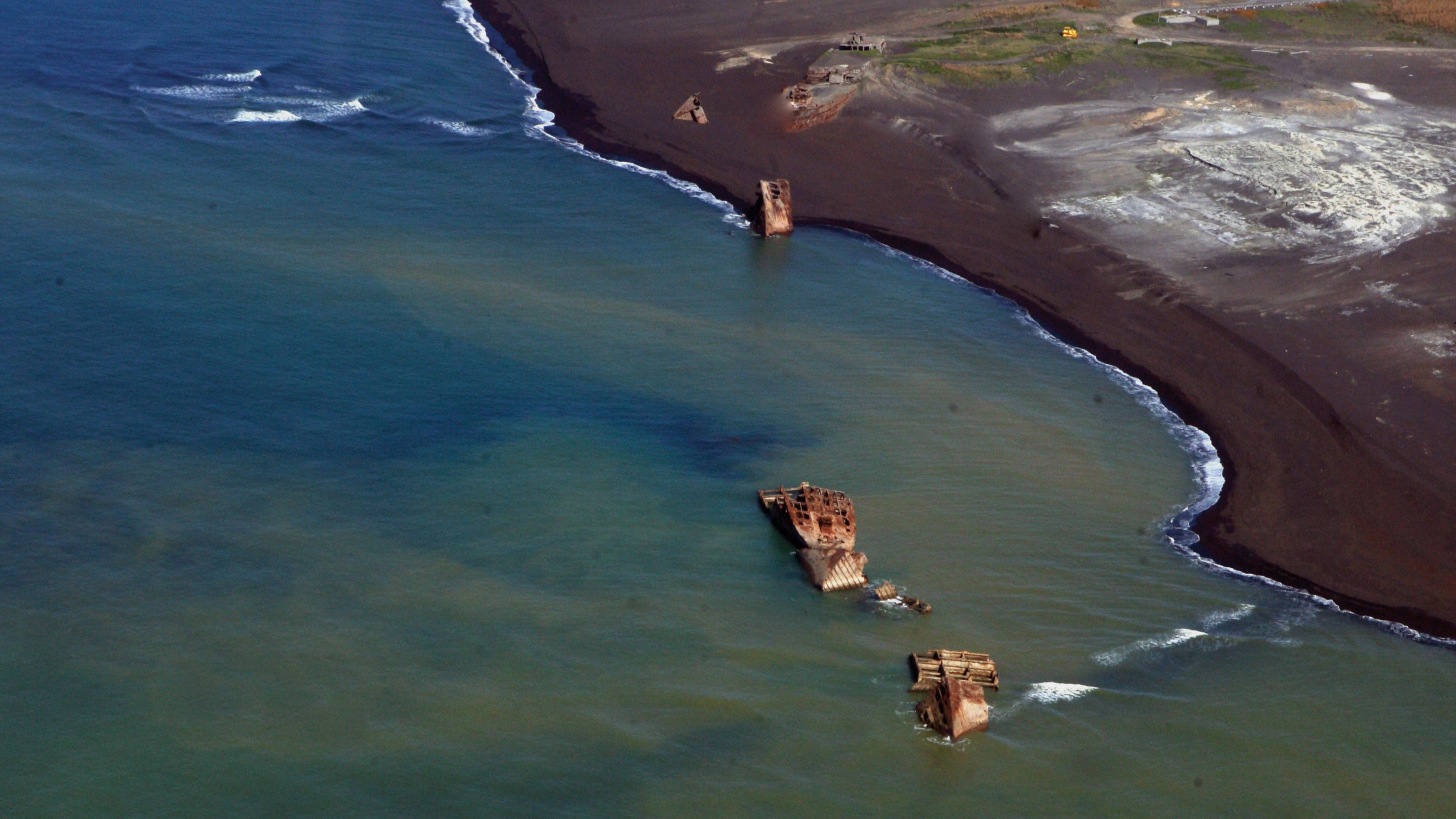WWII 'ghost ships' rise from Pacific after volcanic eruption
The ships were brought up by the rising seabed around an underwater volcano.

Seismic activity from an underwater volcano near Tokyo has raised two dozen "ghost ships" — sunk after one of World War II's most famous battles — from the bottom of the Pacific Ocean.
Helicopter footage from Japan's All Nippon News (ANN) captured the 24 ships washed ashore on the western side of the island of Iwo Jima, which is roughly 760 miles (1,200 kilometers) south of Tokyo, after they were pushed up, along with the seabed, by the underwater volcano Fukutoku-Okanoba.
U.S. forces sank the ships during the Battle of Iwo Jima in 1945. One of the bloodiest battles in the Pacific War, during WWII, the 36-day assault saw roughly 70,000 U.S. Marines fight around 20,000 Japanese soldiers hiding out in bunkers within the island's volcanic rocks. By the end of the battle, 20,000 marines had been wounded and nearly 7,000 killed. Nearly all of the Japanese soldiers, save for 216 captured alive, were killed in action.
Related: Mayday! 17 mysterious shipwrecks you can see on Google Earth
The smashed, sea-bleached wrecks are the remnants of transport vessels that were captured by the U.S. Navy and deliberately scuttled in the aftermath of the battle. As Iwo Jima had no port, the ships were sunk parallel to the shoreline to form a breakwater — shielding both weapons and troops from oncoming waves as they were unloaded onto the island, according to the US National Archives.
Fukutoku-Okanoba has been erupting underwater since August. Besides pushing the ships, and the seabed they are resting upon, into view, the seismic activity produced by the volcano has led to the emergence of a small, crescent moon-shaped island from the sea. Formed from pumice and volcanic ash, the island is expected to vanish soon due to erosion, according to Setsuya Nakada, the director of the Japanese government's Center for Integrated Volcano Research.

Iwo Jima is part of the Bonin Islands, a chain of roughly 30 subtropical islands in the Pacific Ocean. Created by the subduction of the Pacific tectonic plate below the Philippine Sea Plate, the island chain is prone to earthquakes and volcanic eruptions, and it has been experiencing an uptick of seismic events in recent weeks, according to Japan’s Meteorological agency. For instance, on Oct. 7, a magnitude-5.9 tremor shook buildings across Tokyo and eastern Japan. And another volcanic island in the chain, Nishinoshima, has been spewing gas and lava since 2013.
Get the world’s most fascinating discoveries delivered straight to your inbox.
Iwo Jima's Mount Suribachi is the dormant vent to a still-active volcano, and is considered by some to be among the 10 most dangerous volcanoes in the world, according to a list made by one astrophysicist. In fact, there's every indication that the current spate of seismic activity could be building toward an eruption.
"The discolored sea area has spread to surrounding areas, which indicates that the volcanic activity has not diminished yet," Nakada told the All Nippon News channel. "There is a possibility of a big eruption on Iwo Jima."
Barring another eruption of Mount Suribachi or the sinking of the seabed that the ghost ships are resting upon, the once sunken monoliths will likely remain on the island for some time to come. Iwo Jima is uninhabited and rarely visited by civilians — partly as a result of the enormous quantities of unexploded bombs and grenades left behind on the island — meaning that it is unlikely that the ships will be cut up for scrap or removed by Japanese authorities.
Originally published on Live Science.

Ben Turner is a U.K. based staff writer at Live Science. He covers physics and astronomy, among other topics like tech and climate change. He graduated from University College London with a degree in particle physics before training as a journalist. When he's not writing, Ben enjoys reading literature, playing the guitar and embarrassing himself with chess.
